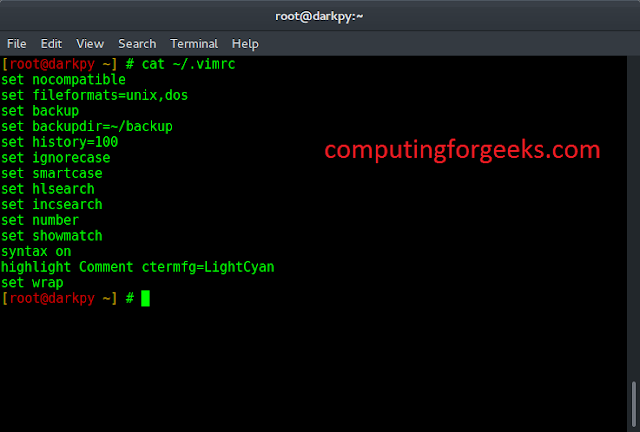Sometimes, while working with Python Records, we can have a problem in which we need to perform the modification of element records on equality of records. This can have a problem in domains that involve data. Let’s discuss certain ways in which this task can be performed.
Input : test_list = [[(12, 5)], [(13, 2)], [(6, 7)]] test_row = [(13, 2)] Output : [[(12, 5)], [(13, 8)], [(6, 7)]] Input : test_list = [[(12, 5), (7, 6)]] test_row = [(13, 2)] Output : [[(12, 5), (7, 6)]]
Method #1: Using loop + enumerate()
The combination of the above functions can be used to solve this problem. In this, we apply brute force for performing task of checking for equality and performing required modification.
Python3
# Python3 code to demonstrate working of# Modify Equal Tuple Rows# Using loop + enumerate()# initializing listtest_list = [[(12, 5), (13, 6)], [(12, 2), (13, 2)]]# printing original listprint("The original list is : " + str(test_list))# initializing check rowtest_row = [(12, 2), (13, 2)]# Modify Equal Tuple Rows# Using loop + enumerate()# multiple y coordinate by 4for idx, val in enumerate(test_list): if val == test_row: temp = [] for sub in val: ele = (sub[0], sub[1] * 4) temp.append(ele) test_list[idx] = temp# printing resultprint("List after modification : " + str(test_list)) |
The original list is : [[(12, 5), (13, 6)], [(12, 2), (13, 2)]] List after modification : [[(12, 5), (13, 6)], [(12, 8), (13, 8)]]
Time Complexity: O(n*n) where n is the number of elements in the list “test_list”. loop + enumerate() performs n*n number of operations.
Auxiliary Space: O(n), extra space is required where n is the number of elements in the list.
Method #2: Using list comprehension
This is yet another way in which this task can be performed. In this, we perform the task using list comprehension in a one-liner way similar to the above method.
Python3
# Python3 code to demonstrate working of# Modify Equal Tuple Rows# Using list comprehension# initializing listtest_list = [[(12, 5), (13, 6)], [(12, 2), (13, 2)]]# printing original listprint("The original list is : " + str(test_list))# initializing check rowtest_row = [(12, 2), (13, 2)]# Modify Equal Tuple Rows# Using list comprehension# multiple y coordinate by 4res = [[(sub[0], sub[1] * 4) for sub in ele] if ele == test_row else ele for ele in test_list]# printing resultprint("List after modification : " + str(res)) |
The original list is : [[(12, 5), (13, 6)], [(12, 2), (13, 2)]] List after modification : [[(12, 5), (13, 6)], [(12, 8), (13, 8)]]
Method 3: Using the map() function with lambda function
- The program then applies the map() function, along with a lambda function, to modify the equal tuple rows in the “test_list” by multiplying the second element of the tuples by 4. The lambda function checks if the current sublist is equal to the “test_row” variable. If it is, then it applies a list comprehension to the sublist, which multiplies the second element of each tuple by 4, and returns the modified sublist. Otherwise, it returns the original sublist.
- The modified list is then stored in a variable named “res”.
- Finally, the program prints the modified list using the print() function.
Python3
# Python3 code to demonstrate working of# Modify Equal Tuple Rows# Using map() + lambda function# initializing listtest_list = [[(12, 5), (13, 6)], [(12, 2), (13, 2)]]# printing original listprint("The original list is : " + str(test_list))# initializing check rowtest_row = [(12, 2), (13, 2)]# Modify Equal Tuple Rows# Using map() + lambda functionres = list(map(lambda ele: [(sub[0], sub[1] * 4) for sub in ele] if ele == test_row else ele, test_list))# printing resultprint("List after modification : " + str(res)) |
The original list is : [[(12, 5), (13, 6)], [(12, 2), (13, 2)]] List after modification : [[(12, 5), (13, 6)], [(12, 8), (13, 8)]]
Time complexity: O(nm) where n is the number of rows and m is the number of tuples in each row.
Auxiliary space: O(nm) for creating the new list of modified rows.
Method 4: Using the NumPy library.
Step-by-step approach:
- Import the NumPy library using the import statement.
- Convert the test_list to a NumPy array using the np.array() method.
- Use the np.where() method to compare each row of the NumPy array with the test_row.
- If the rows are equal, modify the second element of each tuple in the row using the np.multiply() method and the broadcasted test_row tuple.
- Convert the modified NumPy array back to a list of tuples using the np.ndarray.tolist() method.
Python3
import numpy as np# initializing listtest_list = [[(12, 5), (13, 6)], [(12, 2), (13, 2)]]# printing original listprint("The original list is : " + str(test_list))# initializing check rowtest_row = [(12, 2), (13, 2)]# Using NumPy library# Convert to numpy arraynp_array = np.array(test_list)# Use np.where() to compare rows with test_row# If equal, modify the second element of each tuple in the row# using np.multiply() and the broadcasted test_row tuplenp_array = np.where(np_array == np.array(test_row), np.multiply(np_array, np.broadcast_to([1, 4], np_array.shape)), np_array)# Convert modified NumPy array back to a list of tuplesres = np_array.tolist()# printing resultprint("List after modification : " + str(res)) |
Output:
The original list is : [[(12, 5), (13, 6)], [(12, 2), (13, 2)]] List after modification : [[[12, 5], [13, 6]], [[12, 8], [13, 8]]]
Time complexity: O(nm), where n is the number of sublists and m is the number of tuples in each sublist.
Auxiliary space: O(nm), as we create a NumPy array to store the list and perform element-wise comparisons and modifications on the NumPy array.




